#Illustrations of Ancient Rituals
Text
A Review of "The Eleusinian and Bacchic Mysteries" by Thomas Taylor
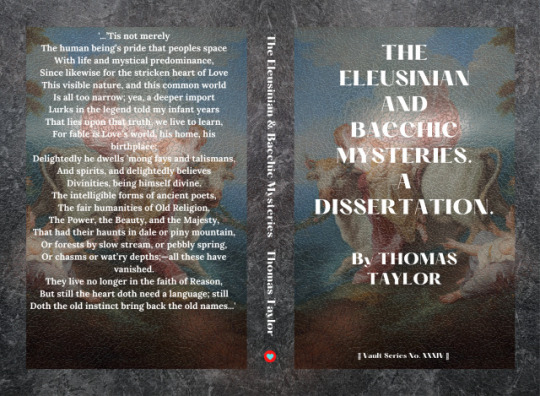
"The Eleusinian and Bacchic Mysteries" is an illuminating journey into the heart of ancient Greek religious practices, meticulously explored and vividly presented by the renowned philosopher and translator, Thomas Taylor. This dissertation, complemented by the evocative illustrations of A. L. Rawson, takes readers on a profound exploration of the mystical rituals that shaped the spiritual landscape of ancient Greece.
Thomas Taylor's scholarly expertise in Neoplatonism and his unwavering dedication to preserving the wisdom of the past shine brilliantly in this work. Through his meticulous translation and commentary, Taylor unveils the enigmatic rites and ceremonies of the Eleusinian and Bacchic Mysteries, providing readers with a window into the spiritual world of ancient Greece.
One of the most remarkable aspects of Taylor's work is his ability to convey the deep spiritual significance of these ancient rituals. He delves into the symbolism, mythology, and metaphysical underpinnings of the Mysteries, revealing how they were designed to facilitate personal transformation and spiritual enlightenment. Taylor's profound insights into the mysteries' inner workings give readers a profound understanding of their purpose and significance.
The accompanying illustrations by A. L. Rawson add another layer of richness to this dissertation. Rawson's artistry brings to life the mystical and mythological elements of the rituals, making the ancient world tangible and captivating. These illustrations serve as a visual guide, enhancing the reader's comprehension and engagement with the material.
"The Eleusinian and Bacchic Mysteries" is not merely a historical account but a spiritual odyssey. It invites readers to contemplate the enduring relevance of these ancient practices in the modern world. Taylor's work inspires us to reflect on the importance of initiation, transformation, and the quest for spiritual truth.
In conclusion, "The Eleusinian and Bacchic Mysteries" is a masterpiece of scholarship and spiritual insight. Thomas Taylor's dedication to preserving the wisdom of antiquity and his ability to convey its profound significance make this dissertation an invaluable resource for anyone interested in the spiritual and mystical traditions of ancient Greece. A. L. Rawson's illustrations add a visually captivating dimension to this already enlightening work. It is a must-read for seekers of wisdom, scholars, and those fascinated by the mysteries of the past.
"The Eleusinian and Bacchic Mysteries" by Thomas Taylor is available in Amazon in paperback 13.99$ and hardcover 19.99$ editions.
Length of the Book: 184 pages
Language: English
Rating 8/10
Link of the book!
Review by King's Cat
#Ancient Greek Mysteries#Eleusinian Mysteries#Bacchic Mysteries#Neoplatonism#Spiritual Enlightenment#Rituals and Ceremonies#Symbolism and Mythology#Spiritual Transformation#Thomas Taylor#A. L. Rawson#Ancient Greek Religion#Mystical Traditions#Spiritual Wisdom#Initiation#Metaphysical Insights#Illustrations of Ancient Rituals#Philosophical Discourse#Esoteric Knowledge#Spiritual Quest#Historical Dissertation
3 notes
·
View notes
Text
A Review of "The Eleusinian and Bacchic Mysteries" by Thomas Taylor

"The Eleusinian and Bacchic Mysteries" is an illuminating journey into the heart of ancient Greek religious practices, meticulously explored and vividly presented by the renowned philosopher and translator, Thomas Taylor. This dissertation, complemented by the evocative illustrations of A. L. Rawson, takes readers on a profound exploration of the mystical rituals that shaped the spiritual landscape of ancient Greece.
Thomas Taylor's scholarly expertise in Neoplatonism and his unwavering dedication to preserving the wisdom of the past shine brilliantly in this work. Through his meticulous translation and commentary, Taylor unveils the enigmatic rites and ceremonies of the Eleusinian and Bacchic Mysteries, providing readers with a window into the spiritual world of ancient Greece.
One of the most remarkable aspects of Taylor's work is his ability to convey the deep spiritual significance of these ancient rituals. He delves into the symbolism, mythology, and metaphysical underpinnings of the Mysteries, revealing how they were designed to facilitate personal transformation and spiritual enlightenment. Taylor's profound insights into the mysteries' inner workings give readers a profound understanding of their purpose and significance.
The accompanying illustrations by A. L. Rawson add another layer of richness to this dissertation. Rawson's artistry brings to life the mystical and mythological elements of the rituals, making the ancient world tangible and captivating. These illustrations serve as a visual guide, enhancing the reader's comprehension and engagement with the material.
"The Eleusinian and Bacchic Mysteries" is not merely a historical account but a spiritual odyssey. It invites readers to contemplate the enduring relevance of these ancient practices in the modern world. Taylor's work inspires us to reflect on the importance of initiation, transformation, and the quest for spiritual truth.
In conclusion, "The Eleusinian and Bacchic Mysteries" is a masterpiece of scholarship and spiritual insight. Thomas Taylor's dedication to preserving the wisdom of antiquity and his ability to convey its profound significance make this dissertation an invaluable resource for anyone interested in the spiritual and mystical traditions of ancient Greece. A. L. Rawson's illustrations add a visually captivating dimension to this already enlightening work. It is a must-read for seekers of wisdom, scholars, and those fascinated by the mysteries of the past.
"The Eleusinian and Bacchic Mysteries" by Thomas Taylor is available in Amazon in paperback 13.99$ and hardcover 19.99$ editions.
Length of the Book: 184 pages
Language: English
Rating 8/10
Link of the book!
Review by King's Cat
#Ancient Greek Mysteries#Eleusinian Mysteries#Bacchic Mysteries#Neoplatonism#Spiritual Enlightenment#Rituals and Ceremonies#Symbolism and Mythology#Spiritual Transformation#Thomas Taylor#A. L. Rawson#Ancient Greek Religion#Mystical Traditions#Spiritual Wisdom#Initiation#Metaphysical Insights#Illustrations of Ancient Rituals#Philosophical Discourse#Esoteric Knowledge#Spiritual Quest#Historical Dissertation
0 notes
Text
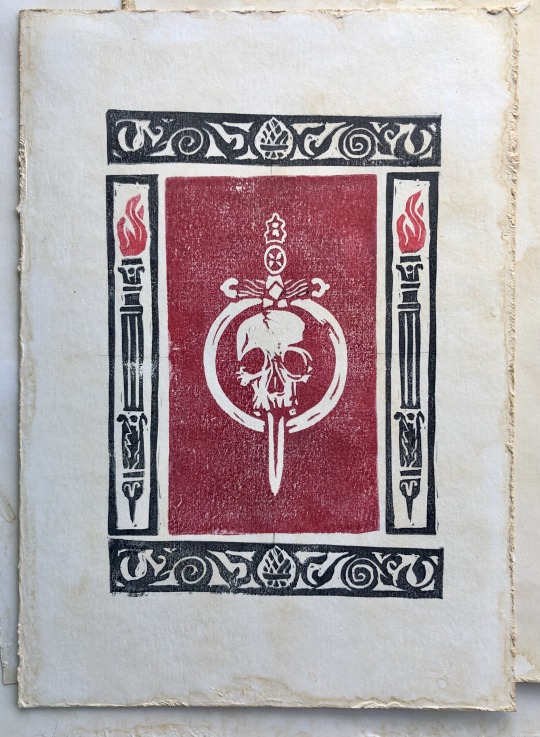
Block print on aged paper.
Etsy
#dark art#artists on tumblr#darkart#illustration#horror#block print#print#ancient#parchment paper#aged paper#skull#occult#occult art#terror#esoteric#occultism#ritual#hermeticism#engraving
50 notes
·
View notes
Text

Cursed Relics 2022 drawing challenge pt 4 - “Gauntlet”
#illustration#drawing challenge#penart#fantasy art#ancient murals#weird priests#cryptic#rituals#gauntlet
9 notes
·
View notes
Text



One more for Unfold: Victim of the Pyramid
✨Patreon ✨Prints ✨Socials and everything else
#artists on tumblr#art#sketch#illustration#painting#fantasy#magic#digitalart#boardgames#board games#pyramid#unfold#girl#priest#ancient#ritual#occult#magick#freelance illustrator#illustrator#commissions#commission#art commisions#digital commisions#human artists#digital artist#small artist#art on tumblr#artwork#artist on kofi
4 notes
·
View notes
Text
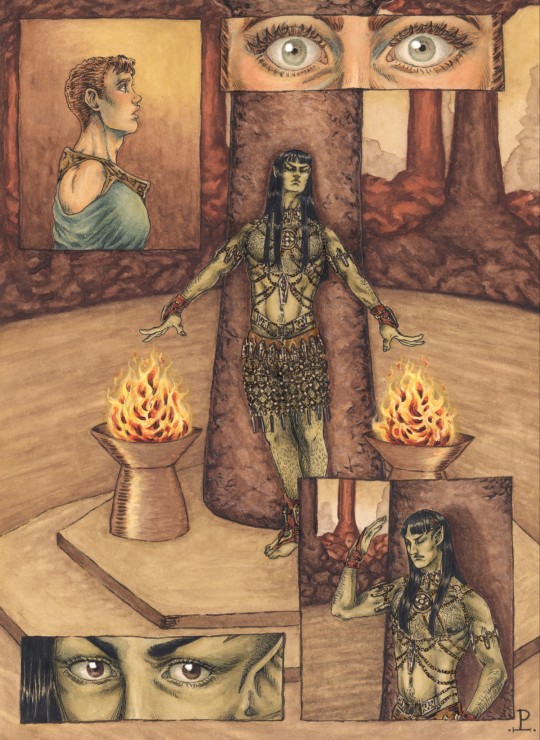
The Ritual
Kirk and Spock end up in ancient Vulcan, long before Surak teachings, an important ancestral ritual is about to happen and the performer has become ill. Not that surprisingly Spock is well-versed in the long forgotten dance and he's chosen to perform by the very surprised eyes of Jim.
Illustration done for K/S Advent 2023
To see the process, tests and details go to chapter 2 in my AO3
#spirk#spirk fanart#spirk au#james t kirk#jim kirk#s'chn t'gai spock#kirk/spock#k/s#pre surak#pre reform vulcan#pre surak spock#vulcan#vulcan ritual#traditional art#my spirk art#st art#star trek#watercolour art#purpleenma#purple enma headcanons#purple enma aus
260 notes
·
View notes
Text

Hellenic Polytheism or Hellenismos is the traditional, polytheistic (multiple gods) religious belief system of Ancient Greece. Modern people who believe in pre-Christian and polytheistic belief systems often refer to themselves as pagans. Let’s look at some of the general practices of typical Hellenic worship.
Hellenic Polytheists use altars or shrines to worship specific Gods within the Greek Pantheon. For example, an altar for Apollo may contain an image or sculpture bust of the god, as well as a side table, called a trapezōmata, which holds offerings of incense and flowers or food and drink such as wine, honey, milk, or olive oil. Another tripod incense holder was called a Thymiateria.
Before engaging in a ceremony, the practitioner will employ purification methods with lustral water (ritually cleansed). They may recite hymns or prayers in honor of the god, using the Homeric hymns for example. The practitioner may use a divination practice to seek guidance or gain insight from a god through methods like casting lots, reading signs from nature, oracle prophecies, and dream interpretations. In their ceremonies, ancient Greeks would perform rites in respect to their Ta Patria, (ancestral homeland heritage), and they would take pride in their reverence with Hos Kallista, or the highest level of beauty.
Hellenic Polytheism follows annual calendar festivals commemorating Gods or famous mythological events such as the Panathenaia in Athens (commemorating Athena), the Anthesteria and City Dionysia; (festivals celebrating Dionysus) The Olympics (a physical competition in honor of Zeus) and the Thargelia, (dedicated to Apollo and Artemis), and the Thesmophoria, (a festival exclusive to women in honor of Demeter), among many others.
Want to own my Illustrated Greek myth book jam packed with over 130 illustrations like this? Support my kickstarter for my book "lockett Illustrated: Greek Gods and Heroes" coming in October.You can also sign up for my free email newsletter. please check my LINKTREE:
#pagan#hellenism#greek mythology#tagamemnon#mythology tag#percyjackson#dark academia#greek#greekmyths#classical literature#percy jackon and the olympians#pjo#homer#iliad#classics#mythologyart#art#artists on tumblr#odyssey#literature#ancientworld#ancienthistory#ancient civilizations#ancientgreece#olympians#greekgods#zeus#hesiod
562 notes
·
View notes
Text
Fritz Springmeier and Cisco Wheeler: Two Of The Most Dangerous Conspiracy Theorists Most People Have Never Heard Of
Fritz Springmeier is a conspiracy theorist who has written a number of absolute doorstoppers (the content of his books is poorly arranged and highly repetitive) claiming the existence of a global satanic cult that secretly controls the world - basically, your typical Protocols of Zion redux shit. Some of his books were written with Cisco Wheeler, a(n alleged) multiple system he claims to have deprogrammed from Illuminati mind control in 1994. Their work has been deeply influential on today's general belief in alter programming. Even if you've never read Wheeler and Springmeier's work directly, you may have come across their ideas. If you've seen anything about jewel programming, flower programming, alpha/beta/delta/epsilon programming, etc.? That's from them. Writers such as Unwelcome Ozian and Svali get their material from their work (in fact, Unwelcome Ozian's book Chainless Slaves literally copypastes some of their material), and people such as Ellen P. Lacter and Alison Miller of the ISSTD/RAMCOA-SIG frequently cite Svali. Furthermore, their work has had a huge impact on David Icke's reptilian alien conspiracy theories.
Here's a selection (yes, seriously, the following wall of text is only a small sample) of their claims from their trilogy series on Illuminati mind control (They Know Not What They Do - An Illustrated Guide To Monarch Mind Control, The Illuminati Formula Used To Create An Undetectable Total Mind Controlled Slave, and Deeper Insights Into The Illuminati Formula), which they wrote/published in the mid to late 1990's:
The Illuminati is a multi-generational satanic cult made up of thirteen elite bloodlines, who are working behind the scenes to enthrone the Antichrist in the year 2000. (It's been over twenty years, still no Antichrist.)
The Illuminati is behind the French Revolution and the Abolition movement. (Conspiracy theories invented by people who were pro-monarchy and pro-slavery.)
The Illuminati is pushing for gay rights as part of their plan to bring the Antichrist into power.
The Illuminati creates effeminate gay men by dosing pregnant mothers with progesterone and estrogen.
The Illuminati practices "trauma-based mind control," which in this context refers to an alleged (and very unsubstantiated) practice of inflicting brutal tortures to trigger the formation of alters, which will be programmed for various tasks, and made accessible to programmers via special codes and triggers.
TBMC practices often (though not always) take the form of satanic rituals. (Evil is always very, very theatrical in the minds of conspiracy theorists.)
The Illuminati's rituals are "based upon the most ancient mystery religions," because "one of the secrets of the Mystery Religions, especially the Egyptian Isis mystery religion was the ability to use drugs and torture to create multiple personalities." (Citation needed, Fritz.)
The European witch hunts were actually justified, because Europe was full of satanic practitioners of trauma-based mind control. (Seriously, what kind of ghoul claims the witch hunts were in any way justified?)
The Nazis' eugenics program wasn't actually about eugenics. It was actually a front for researching mind control, and that Project Monarch was based on research conducted by Dr. Josef Mengele, whom they claim was an "adept in Caballistic magic" assisted by "Askenazi hasidic black magic adepts." (This is a variation on the claim that Jews actually orchestrated the Holocaust)
Groups that are part of the Illuminati and practice Monarch mind control include (but are not limited to) The Catholic Church/Jesuits, Mormons, Assembly of God churches, the Watchtower Society, Hasidic Judaism, modern witchcraft, Druidry, Santeria, Freemasons, Golden Dawn, NASA, and professional baseball. (I think we can agree that some of these groups are very harmful, but that doesn't mean they're part of this conspiracy he's talking about.)
There are many different types of Monarch alter programming, including but not limited to gem programming, elemental programming, flower programming, color programming, Gumby programming, beehive programming, sex kitten programming, Greek letter programming, carousel programming, demon programming, alien programming, Mensa programming, Atlantis programming, paper doll programming, tumbleweed programming, waterjar shaking programming, Cinderella programming - it goes on.
"Body programs" can be installed to cause hearing problems, circulation issues, headaches, digestive problems, heart failure - basically, all those health problems that people who aren't conspiracy theorists would explain through allergies, stress, mental illness, or just common flaws of the human body.
Most slaves have "end-time programming," and will be activated to round up and kill opponents of the NWO when the time comes from the Antichrist to take power. (Again, it's been over twenty years.
Cisco Wheeler was programmed to be part of the Antichrist's elite imperial guard.
They claim, and I quote, "drugs, torture, hypnosis and MPD all work to enhance memory" and "most slaves have some photographic memory capability." They also claim that systemwide photographic memory can be created through brain stem scarring. (Conspiracy theorists literally made this up.)
The brains of Monarch slaves are more active than normal people's brains, because both sides of the Monarch slave's brain work simultaneously. (Both sides of everyone's brains are working all the time, that is literally how brains work.)
Mind control implants have been a thing since the 1960's. One woman had an implant disguised as a pubic hair. JZ Knight had an audio implant in her teeth that activated her to become a New Age leader. Microchip implants can affect DNA growth. "Fiber optic" mind control devices can be shot into the skin from a distance. (You can tell they rely on their audience to not understand anything about electronics in addition to neuroscience.)
Switching alters can literally change the color of your eyes. (It's impossible for someone's eyes to instantly switch color in the same way it's impossible for their skin to instantly change color.)
Fairy tales, fantasy media, movies, and television shows are full of deliberate programming. Some (but not all) of the media Springmeier and Wheeler implicate includes The Wizard of Oz, The Chronicles of Narnia, Alice in Wonderland, Disney films in general, A Little Princess, Star Trek, Star Wars, E.T., Tiny Toons, The Simpsons, Frankenstein, Bewitched, and Labyrinth.
Basically, any piece of entertainment that isn't morally pure from a far right Christian perspective is part of the Illuminati's plan to corrupt the youth and lead them down the patch of witchcraft and into satanism.
The story of the Golem is actually about a mind-controlled slave, and that "the main goal of the Cabala is to create a mind-controlled slave called a golem." Also, the Brothers Grimm were "Cabalistic Jews." (For a guy who insists he's not antisemitic, Fritz Springmeier sure likes to accuse people of being Jewish and demonize Jewish stuff.)
Famous Illuminati slaves include (but are not limited to) Marilyn Monroe, Elvis Presley, Roseanne Barr, Bette Midler, Madonna, and the Beatles. They claim Charles Manson was programmed with Beatles music.
(List break here because this whole thing was longer than Tumblr's allowed block length. Again, I emphasize, I am only posting a small sample of the BS they put in their books.)
The Illuminati's intelligence agencies have programmed "thousands upon thousands of slaves." The Naval Ordinance Test Station at China Lake was actually a Monarch programming facility, where thousands of babies were kept in cages. "Lots of 1000 babies was a small batch," and "many batches were 2000 or 3000 babies."
The average Monarch system is programmed with 1000 alters.
The Illuminati prefers to program blond, blue-eyed children without visible body defects or scars. (Funny how these conspiracy theorists keep claiming to hate white supremacy, then insist blond, blue-eyed children are special targets.)
The Illuminati has no trouble finding sadistic torturers because, and I quote, "essentially all human males can be taught to engage in sadistic behavior." In fact, the Illuminati's Mothers of Darkness are often necessary to make sure the male torturers don't go too far.
The Illuminati used chimpanzees to physically torture children. (The pair of them clearly do not understand how strong chimpanzees actually are.)
Babies can learn to read by six months old with the use of subliminal tapes.
Learning to write backwards makes you more likely to dissociate. (Bizarre variant on old 'Satan does things backwards to mock God' canard.)
Failed Monarch programming/TBMC causes autism. Autism is when children withdraw from the world and retreat into themselves. (If there's two things we know about autism, it's that it's not traumagenic, and it's not about withdrawing from the world to retreat into your own mind.)
If you hang someone upside down long enough, they will begin to reverse pain and pleasure. Yeah, supposedly, if you physically reverse a person's body, their mind will start reversing, too. This, apparently, is how we get kinksters who like pain.
Scars can be made more visible via hypnotic command, and this has been a thing in the occult world for centuries. (Modern version of the Devil's Mark/witch's tit myth.)
Moles are a sign of prior electroshock torture. (Another modern version of the Devil's mark/witch's tit myth.)
King Hezekiah - yes, the Biblical King Hezekiah - was a child victim of satanic ritual abuse. (Of course the Bible chapter they cite - 2 Chronicles 29 - mentions nothing of the sort.)
Direct quote, "Vice-President Al Gore is a vampire and carries a briefcase of blood with him." (Modern conspiracy theorists love to sling blood libel at Democrats.)
Hillary Clinton is an Illuminati Grand Dame and programmer. (Gotta accuse those Democrat women of being witches.)
Roma people practice cannibalism. (Pure anti-Romani racism.)
The Illuminati has the cure for AIDS.
Adrenochrome is a secret black market drug. (This is a modern form of blood libel.)
Snuff pornography is a real thing. (It's really not.)
Being on Prozac makes you susceptible to becoming homicidal or suicidal if you're exposed to certain electromagnetic frequencies. The Illuminati is deliberately exposing people to these frequencies to increase these behaviors in order to get anti-gun legislation passed.
Cellphone towers emit electromagnetic frequencies that can control people's minds.
Putting one's hands behind one's head is a secret Illuminati hand signal meaning "I'm master." Folding one's hands is a secret Illuminati symbol for "you can't break the circle." Thumb-twiddling is an Illuminati hand signal for S&M. Other normal, everyday hand positions/gestures/movements are given equally conspiratorial explanations.
The "Vulcan peace sign" is an Illuminati/occult greeting. (This claim isn't just demonizing Star Trek - it's antisemitic.)
High-ranking members of the Illuminati hold fancy cannibal dinner parties and feed children to lions and tigers.
Lots and lots of child sacrifice happens. There's even rituals where children sacrifice other children and eat their hearts.
The shape of your skull affects your personality, and the Illuminati creates permanent personality changes by changing the shapes of people's skulls. (This is literally phrenology, which is pseudoscience.)
The Illuminati implants real, actual demons into victims, which can only be removed through Christian deliverance. Also, accepting Jesus as one's Lord and Savior is the only way for victims to truly heal, no ifs, ands, buts, or maybes.
Down's Syndrome can be cured with cranial manipulation. (Craniosacral therapy is quackery.)
Many people diagnosed with schizophrenia have actually been given implants by the government.
Ronald Reagan is "our future president." (Yes, Fritz Springmeier wrote these words during the Clinton administration.)
The US government has built 140 massive underground bases for various purposes, including housing "several varieties of aliens."
The Illuminati has been creating human clones and biological robot doubles for years, and has created such doubles for politicians such as Jimmy Carter. (Allegations of clones and duplicates goes back to the witch hunts, where witch hunters would claim Satan conjured up doubles for witches so their families wouldn't miss them while they went to the witches' sabbath. Also, it's a form of dehumanization.)
Therapists treating victims of alter programming/trauma-based mind control should separate their clients from their programmer (read: isolate them from friends, family, and acquaintances) and hold multi-hour therapy sessions to help them remember their abuse and discover their hidden alters (read: make sure they're constantly exposed to this narrative so they'll start to internalize it and begin "remembering" what you want). Wheeler outright says that the "better therapists" will wear down their clients with lengthy question and answer sessions. She recommends having a team of therapists to work on a single client, with a female mother figure and male father figure.
Depression is a sin that comes from a lack of faith.
Trance-Formation of America is a good example of how mind control victims are treated. (Trance-Formation of America is also part of the Project Monarch/alter programming conspiracy theory.)
Full quote, "All Illuminati victims of mind-control have been terrorized by their abusers about how God hates them and how God will punish them for their badness." (In other words, much of what these people are chalking up to alter programming/TBMC can very easily be explained by religious trauma from being brought up in a conservative Christian environment.)
Again, these are the types of claims made by the two people from which all of this stuff about all of these specific types of alter programming, body programs, etc. originate. Whether or not people on RAMCOA sites acknowledge Springmeier and Wheeler outright, much the stuff they're claiming can very much be traced back to them.
Now, some of you reading this might still be wondering whether the alter programming could more than a conspiracy theory; like, maybe there's actually people out there who are really doing this, even if they aren't involved in some grand sinister conspiracy. And the answer is still no.
First, this conspiracy theory effectively proposes that there was an epidemic of people engaging in this very specific practice back during a time period when the most that people knew about DID (if they knew about DID at all) came from from the Sybil book or movie (and the real "Sybil" never had DID); or even before that point, if we include the people who claimed they were programmed in the 40's-60's. The idea that all of these unconnected people all independently came up with this is simply beyond absurd. If this was a real practice being done out there by any significant number of people at all, extensive technical literature describing the procedures in full detail would have to exist. This literature would at some point have been found in the homes, workplaces, etc. of programmers. Alter programming has allegedly been practiced since at least the 1940s, and not a single piece of this literature has ever been found anywhere; not on the most depraved 4Chan user's computer, not in the edgiest occultist's library, and not in the home of any child molesting priest. The only literature that describes these supposed practices comes from conspiracy theorists, and they aren't nearly detailed enough to constitute any kind of actual manual. It's very telling that when Fritz Springmeier et al name books that supposedly contain this sort of information, the books either contain nothing of the sort (for example, old grimoires), or have no evidence of ever existing in the first place.
And while it's true that extreme trauma can cause dissociation and the formation of alters, that's about the only thing this conspiracy theory gets right. Everything else is like some kind of edgy sci-fi take on it, about as accurate to real neuroscience as Jaws is to real sharks. The people who thought they saw evidence of "structured DID" back in the day made a similar error to the people who look at natural hills and mountains and think they're seeing ancient pyramids, or look at Bimini Road and actually think it's a real man-made road rather than a natural rock formation. People would look at someone having literally any trauma response or distress behavior (which may or may not have actually involved DID or OSDD), and think they were seeing the work of some diabolical mastermind. Basically, it's a form of pareidolia. The therapists would share their beliefs with their patients, who would internalize it in their own minds, and come back with stuff that seemed to confirm their therapists' suspicions.
What's going on here is a pretty straightforward case of confabulated memory cultivation. This kind of thing happens all the time in places like the New Age starseed movement, where people start learning New Age mythology and what kind of alien beings they supposedly could have been in a past life. Whether through hypnosis, vivid dreams, or even incredibly vivid flashes of mental imagery out of the blue, people begin "remembering" supposed lost memories that simply cannot be real because real historical evidence contradicts them at nearly every turn. You can see examples of this for yourself over here and over here.
Confabulated memory cultivation isn't really practiced on purpose, per se; at least, not typically. What happens is you have people who legitimately believe that they can retrieve lost memories, whether from their childhoods or from a past life. And unlike literature that tells you how to program alters, literature that describes methods to supposedly retrieve lost memories exists in abundance. People have made jobs out of allegedly helping people retrieve lost memories ever since people believed that was a thing they could do.
The alter programming conspiracy theory was part of a mental health fad where people believed that repressed memories were the root cause of many ordinary mental and physical health problems. Symptoms of anxiety, depression, chronic stress, PTSD, C-PTSD, BPD, schizophrenia, bipolar, autism, ADHD, allergies, mast cell activation syndrome, fibromyalgia, and more are all chalked up to repressed memories and alter programming. Very, very tellingly, many of the symptoms described in this type of literature are exactly what you'd expect from religious trauma in a conservative Christian environment. In fact, the alter programming conspiracy theory implicitly denies that it would be possible to develop serious trauma from the kind of abusive parenting that conservative Christian culture encourages and condones.
Also, the fact that the ISSTD/RAMCOA SIG continues propagating the claims made by Springmeier and Wheeler definitively shows us that the purpose of ISSTD/RAMCOA-SIG is repackaging Satanic Panic and far right conspiracy theories more generally, and that the very term "Ritual Abuse, Mind Control, & Organized Abuse" is in fact a Trojan horse intended to slip all of this stuff back into legitimate psychological discourse and discussions of systemic abuse, religious abuse, human trafficking, etc. The fact that people cannot question RAMCOA without being accused of denying these things shows that this is working out really well for the the ISSTD/RAMCOA SIG right now.
I'd like to emphasize that I am not trying to say that people who were led to believe they were victims of alter programming haven't been severely abused in some way, or that none of them have DID. This conspiracy theory is very much built to prey on these sorts of people. The point I am making is that it is indeed a conspiracy theory, and that it harms many people, both with and without DID.
Now, I know there's some folks out there who have been led to believe that real evidence of widespread alter programming or even widespread ritual abuse (ie, the practice of abusive occultic rituals) were found, but conservative Christians simply co-opted real events to attack the people they didn't like. And that simply isn't what happened. It was the conspiracy theorists - people like Dr. Lawrence Pazder and Mike Warnke - who positioned themselves as ritual abuse experts and instructed police and therapists on what to look out for. It was always a literal witch hunt from the very beginning.
If you are looking for any kind of mental health support, or wish to talk about real forms of abuse, I strongly recommend avoiding terms like Satanic Ritual Abuse, Ritual Abuse, Mind Control, & Organized Abuse, Organized Abuse, Organized Extreme Abuse, Ritual Abuse, Mind Control, Trauma-Based Mind Control, and so on, because these are all terms created and used by conspiracy theorists. We have other terms to talk about real abuse, including spiritual abuse, religious abuse, systemic abuse, institutional abuse, sexual abuse, sex trafficking, and so on.
Likewise, if you see someone using these terms, you know that their information is downstream from conspiracy theorists, and therefore, is highly suspect. If you're looking for any sort of mental health/trauma support whatsoever, be very wary whenever you see someone using them. Even if they mean well, what they're putting out there is still contaminated by the myths and misinformation of the Satanic Panic, which will never support actual healing.
#fritz springmeier#cisco wheeler#conspiracy theorists#conspiracy theorist#conspiracy theories#conspiracy theory#conspiracism#project monarch#monarch mind control#alter programming conspiracy theory#alter programming#ramcoa#tbmc#trauma based mind control#organized abuse#ritual abuse#mind control#satanic panic#sra#satanic ritual abuse
94 notes
·
View notes
Text
Writing Notes: Culture

There are many definitions of culture and it is used in different ways by different people.
Culture - may be defined as patterns of learned and shared behavior that are cumulative and transmitted across generations.
Patterns
There are systematic and predictable ways of behavior or thinking across members of a culture.
Emerge from adapting, sharing, and storing cultural information.
Can be both similar and different across cultures.
Example: In both Canada and India it is considered polite to bring a small gift to a host’s home. In Canada, it is more common to bring a bottle of wine and for the gift to be opened right away. In India, by contrast, it is more common to bring sweets, and often the gift is set aside to be opened later.
Sharing
Culture is the product of people sharing with one another.
Humans cooperate and share knowledge and skills with other members of their networks.
The ways they share, and the content of what they share, helps make up culture.
Example: Older adults remember a time when long-distance friendships were maintained through letters that arrived in the mail every few months. Contemporary youth culture accomplishes the same goal through the use of instant text messages on smartphones.
Learned
Behaviors, values, norms are acquired through a process known as enculturation that begins with parents and caregivers, because they are the primary influence on young children.
Caregivers teach kids, both directly and by example, about how to behave and how the world works.
They encourage children to be polite, reminding them, for instance, to say “Thank you.” They teach kids how to dress in a way that is appropriate for the culture.
Culture teaches us what behaviors and emotions are appropriate or expected in different situations.
Example: In some societies, it is considered appropriate to conceal anger. Instead of expressing their feelings outright, people purse their lips, furrow their brows, and say little. In other cultures, however, it is appropriate to express anger. In these places, people are more likely to bare their teeth, furrow their brows, point or gesture, and yell (Matsumoto, Yoo, & Chung, 2010).
Learned: Rituals
Members of a culture also engage in rituals which are used to teach people what is important.
Example 1: Young people who are interested in becoming Buddhist monks often have to endure rituals that help them shed feelings of specialness or superiority—feelings that run counter to Buddhist doctrine. To do this, they might be required to wash their teacher’s feet, scrub toilets, or perform other menial tasks.
Example 2: Similarly, many Jewish adolescents go through the process of bar and bat mitzvah. This is a ceremonial reading from scripture that requires the study of Hebrew and, when completed, signals that the youth is ready for full participation in public worship.
These examples help to illustrate the concept of enculturation.
Cumulative
Cultural knowledge is information that is “stored” and then the learning grows across generations.
We understand more about the world today than we did 200 years ago, but that doesn’t mean the culture from long ago has been erased.
Example: Members of the Haida culture, a First Nations people in British Columbia, Canada are able to profit from both ancient and modern experiences. They might employ traditional fishing practices and wisdom stories while also using modern technologies and services.
Transmission
Passing of new knowledge and traditions of culture from one generation to the next, as well as across other cultures is cultural transmission.
In everyday life, the most common way cultural norms are transmitted is within each individuals’ home life.
Each family has its own, distinct culture under the big picture of each given society and/or nation.
With every family, there are traditions that are kept alive.
The way each family acts and communicates with others and an overall view of life are passed down.
Parents teach their kids every day how to behave and act by their actions alone.
Outside of the family, culture can be transmitted at various social institutions like places of worship, schools, even shopping centers are places where enculturation happens and is transmitted.
Understanding culture as a learned pattern of thoughts and behaviors is interesting for several reasons:
It highlights the ways groups can come into conflict with one another. Members of different cultures simply learn different ways of behaving. Teenagers today interact with technologies, like a smartphone, using a different set of rules than people who are in their 40s, 50s, or 60s. Older adults might find texting in the middle of a face-to-face conversation rude while younger people often do not. These differences can sometimes become politicized and a source of tension between groups. One example of this is Muslim women who wear a hijab, or headscarf. Non-Muslims do not follow this practice, so occasional misunderstandings arise about the appropriateness of the tradition.
Understanding that culture is learned is important because it means that people can adopt an appreciation of patterns of behavior that are different than their own.
Understanding that culture is learned can be helpful in developing self-awareness. For instance, people from the United States might not even be aware of the fact that their attitudes about public nudity are influenced by their cultural learning. While women often go topless on beaches in Europe and women living a traditional tribal existence in places like the South Pacific also go topless, it is illegal for women in some of the United States to do so. These cultural norms for modesty that are reflected in government laws and policies also enter the discourse on social issues such as the appropriateness of breastfeeding in public. Understanding that your preferences are, in many cases, the products of cultural learning might empower you to revise them if doing so will lead to a better life for you or others.
Humans use culture to adapt and transform the world they live in and you should think of the word culture as a conceptual tool rather than as a uniform, static definition.
Culture changes through interactions with individuals, media, and technology, just to name a few.
Culture generally changes for one of 2 reasons:
Selective transmission or
to meet changing needs.
This means that when a village or culture is met with new challenges, for example, a loss of a food source, they must change the way they live.
It could also include forced relocation from ancestral domains due to external or internal forces.
Example: In the United States, tens of thousands Native Americans were forced to migrate from their ancestral lands to reservations established by the United States government so it could acquire lands rich with natural resources. The forced migration resulted in death, disease and many cultural changes for the Native Americans as they adjusted to new ecology and way of life.
Source
More: On Psychology
#writing notes#culture#psychology#writeblr#writing reference#dark academia#spilled ink#literature#writers on tumblr#writing prompt#poetry#poets on tumblr#creative writing#writing resources
72 notes
·
View notes
Text
"Unveiling the Mysteries: E. A. Wallis Budge's 'Egyptian Magic'—A Scholarly Odyssey into Ancient Mysticism"

"Egyptian Magic" by E. A. Wallis Budge serves as a captivating portal to the mystical world of ancient Egypt, where the realms of magic, religion, and spirituality seamlessly intertwined. Published in [year], this seminal work by Budge, a renowned Egyptologist, offers readers a comprehensive exploration of the magical practices and beliefs that permeated the daily lives of the ancient Egyptians. The title itself hints at the enigmatic allure that beckons readers into a realm where the boundaries between the mundane and the supernatural blur.
Budge, known for his extensive scholarship on Egyptology, brings to life the magical traditions of ancient Egypt with meticulous detail. The title "Egyptian Magic" acts as a prelude to a journey through the spells, rituals, and incantations that were integral to the spiritual landscape of this ancient civilization. Budge's prose, though rooted in academic rigor, retains a sense of wonder that makes the subject accessible to both scholars and enthusiasts alike.
One of the strengths of "Egyptian Magic" lies in Budge's ability to contextualize magical practices within the broader religious and cultural framework of ancient Egypt. Each chapter unfolds like a chapter in the Book of the Dead, revealing the layers of meaning behind the magical spells and their significance in the Egyptian worldview. The title becomes a guide through this esoteric terrain, inviting readers to decipher the symbols and incantations that held profound meaning for the practitioners of ancient Egyptian magic.
Budge delves into the different categories of magical practices, from healing spells to protective amulets, showcasing the diverse ways in which magic permeated every facet of Egyptian life. The title "Egyptian Magic" encapsulates this multifaceted exploration, promising readers a glimpse into the rituals that sought to harness cosmic forces and commune with the divine. Budge's meticulous research and translations transport readers back in time, allowing them to witness the rituals and ceremonies that were once an integral part of the Egyptian magical tradition.
The inclusion of hieroglyphic illustrations and translations of magical texts further enhances the immersive experience of "Egyptian Magic." Budge's expertise in deciphering ancient Egyptian scripts provides readers with a firsthand encounter with the original magical incantations. The title serves as a doorway to an ancient scriptorium, where the secrets of Egyptian magic are inscribed in symbols that continue to captivate and mystify.
Beyond the academic discourse, Budge's work touches upon the spiritual dimensions of ancient Egyptian magic. The title becomes a metaphorical key, unlocking the mystical teachings that guided the Egyptian magicians in their quest for spiritual enlightenment. Budge sheds light on the deep connection between magic and the afterlife, where spells and charms were believed to secure a favorable passage through the realm of the dead.
In conclusion, "Egyptian Magic" by E. A. Wallis Budge stands as a magnum opus that unravels the complexities of an ancient civilization's magical traditions. The title invites readers into a world where the mystical and the mundane coalesce, where words held the power to shape destinies and unlock the gates to the divine. Budge's meticulous scholarship, coupled with the evocative title, ensures that "Egyptian Magic" remains a timeless exploration of the enchantments that once echoed through the sacred temples and burial chambers of ancient Egypt.
"Egyptian Magic" by E. A. Wallis Budge is available in Amazon in paperback 11.99$ and hardcover 19.99$ editions.
Number of pages: 196
Language: English
Rating: 10/10
Link of the book!
Review By: King's Cat
#E. A. Wallis Budge#Egyptian Magic#Ancient Egypt#Mysticism#Magical practices#Religion#Spirituality#Enigmatic allure#Ancient civilization#Spells and rituals#Book of the Dead#Esoteric terrain#Symbols and incantations#Cosmic forces#Communing with the divine#Healing spells#Protective amulets#Egyptian worldview#Hieroglyphic illustrations#Translations of magical texts#Deciphering scripts#Original magical incantations#Scriptorium#Spiritual dimensions#Quest for enlightenment#Afterlife#Passage through the realm of the dead#Academic rigor#Hieroglyphic symbols#Ancient scripts
6 notes
·
View notes
Text
"Unveiling the Mysteries: E. A. Wallis Budge's 'Egyptian Magic'—A Scholarly Odyssey into Ancient Mysticism"

"Egyptian Magic" by E. A. Wallis Budge serves as a captivating portal to the mystical world of ancient Egypt, where the realms of magic, religion, and spirituality seamlessly intertwined. Published in [year], this seminal work by Budge, a renowned Egyptologist, offers readers a comprehensive exploration of the magical practices and beliefs that permeated the daily lives of the ancient Egyptians. The title itself hints at the enigmatic allure that beckons readers into a realm where the boundaries between the mundane and the supernatural blur.
Budge, known for his extensive scholarship on Egyptology, brings to life the magical traditions of ancient Egypt with meticulous detail. The title "Egyptian Magic" acts as a prelude to a journey through the spells, rituals, and incantations that were integral to the spiritual landscape of this ancient civilization. Budge's prose, though rooted in academic rigor, retains a sense of wonder that makes the subject accessible to both scholars and enthusiasts alike.
One of the strengths of "Egyptian Magic" lies in Budge's ability to contextualize magical practices within the broader religious and cultural framework of ancient Egypt. Each chapter unfolds like a chapter in the Book of the Dead, revealing the layers of meaning behind the magical spells and their significance in the Egyptian worldview. The title becomes a guide through this esoteric terrain, inviting readers to decipher the symbols and incantations that held profound meaning for the practitioners of ancient Egyptian magic.
Budge delves into the different categories of magical practices, from healing spells to protective amulets, showcasing the diverse ways in which magic permeated every facet of Egyptian life. The title "Egyptian Magic" encapsulates this multifaceted exploration, promising readers a glimpse into the rituals that sought to harness cosmic forces and commune with the divine. Budge's meticulous research and translations transport readers back in time, allowing them to witness the rituals and ceremonies that were once an integral part of the Egyptian magical tradition.
The inclusion of hieroglyphic illustrations and translations of magical texts further enhances the immersive experience of "Egyptian Magic." Budge's expertise in deciphering ancient Egyptian scripts provides readers with a firsthand encounter with the original magical incantations. The title serves as a doorway to an ancient scriptorium, where the secrets of Egyptian magic are inscribed in symbols that continue to captivate and mystify.
Beyond the academic discourse, Budge's work touches upon the spiritual dimensions of ancient Egyptian magic. The title becomes a metaphorical key, unlocking the mystical teachings that guided the Egyptian magicians in their quest for spiritual enlightenment. Budge sheds light on the deep connection between magic and the afterlife, where spells and charms were believed to secure a favorable passage through the realm of the dead.
In conclusion, "Egyptian Magic" by E. A. Wallis Budge stands as a magnum opus that unravels the complexities of an ancient civilization's magical traditions. The title invites readers into a world where the mystical and the mundane coalesce, where words held the power to shape destinies and unlock the gates to the divine. Budge's meticulous scholarship, coupled with the evocative title, ensures that "Egyptian Magic" remains a timeless exploration of the enchantments that once echoed through the sacred temples and burial chambers of ancient Egypt.
"Egyptian Magic" by E. A. Wallis Budge is available in Amazon in paperback 11.99$ and hardcover 19.99$ editions.
Number of pages: 196
Language: English
Rating: 10/10
Link of the book!
Review By: King's Cat
#E. A. Wallis Budge#Egyptian Magic#Ancient Egypt#Mysticism#Magical practices#Religion#Spirituality#Enigmatic allure#Ancient civilization#Spells and rituals#Book of the Dead#Esoteric terrain#Symbols and incantations#Cosmic forces#Communing with the divine#Healing spells#Protective amulets#Egyptian worldview#Hieroglyphic illustrations#Translations of magical texts#Deciphering scripts#Original magical incantations#Scriptorium#Spiritual dimensions#Quest for enlightenment#Afterlife#Passage through the realm of the dead#Academic rigor#Hieroglyphic symbols#Ancient scripts
0 notes
Text
A while back ago I had a lil rant about the pagan/heathen/witch community and made this list with my friend about some problematic aspects about our craft/faith/practise or what ever you call it to help pepole who are new to it.
Idk if it any of worth or if anyone will bother to read all this but I hope its somehow helpfull for you new ones to this path.
(Pardon my 🇬🇧, im a 🇸🇪)
1. Not every polytheist does magic or has an intrest in it and thats ok.
2. Not every norse heathen knows runes or has to know every Rune and meanings to have a meaningfull relation to the gods and nature.
3. Not every raven is a sign of Odin, sometimes it just means you saw a raven and thats just as good if not better if you ask me.
4. Being able to quote havamal in old norse or know every myth and kenning of the gods is good. But does not mean you have a stronger spirital connection the land and the gods then those who dont know it all. It just means you are good at reading. And that in it self is something you should take pride in.
5. A good acorn and some dirt is just as good if not better than any long ritual with ancient chantings sourounded by a collection of crystals.
6. The pebble you find on a walk can shine just as fine on your altar, as the amethyst that was mined and payed for.
7. Your altar dont have to look Nice, it just need to feel Nice.
8. An offering dont have to be big to work. It just have to mean something.
9. Offering one loaf of bread you baked with your own two hands, is worth more than five loafs you payed somone to bake.
10. Just because a pebble dont have a story, does not mean it never had one. And just because a star has a story, does not mean its a good one.
11. If all nature is holy, that includes the parts you dont like or find nasty. Yes even ticks and spiders, mud and horrnets. No one said you had to like holy things.
12. Your body is a temple yes, but you and only you decides what rites and offerings are right the god within said temple.
13. You can still be a drunk horny ape and be spiritual.
14. No illustration of the gods is more corect or more true to their form.
But then there is no garantee everyone will see who its meant to be. And thats ok.
15. Doing spirtual junk and practise magic or healing does not make you more enlightened...
16. Just because you wrote a book about magic, healing and spiritual matters, does not make it a good book or you a good author.
17. Just because someone you look up to said it, does not make it more right. It just means they said it.
18. Making this list to remind the pagan/witch/heathen community to hummble them selfs does not make me better. Im also doing this to just remind myself. Im not better or wiser than any of you lot.
19. Dont ever expect to have your craft respected if you dont give that same respect back to others.
20. It does not matter how old or big your coven or group is. If it has toxic and harmfull parts that clearly hurt and or make pepole unhappy. Then its ok to criticize it. Age or size does not make it untuchble.
21. If a craft or faith says its all about nature but cant change its ways, then it has clearly missed a very important thing about how nature works.
22. Every rock is an altar and every forest is a temple.
23. For every horn of mead you offer to the gods, you should plant at least one seed.
24. If all in this world has a spirit and is alive, does not mean you cant take space and exist and live in it.
25. Its not about beliving. Its about to experience and to perceive. That if you ask me, is the core of animism and polytheism.
#polytheism#heathen#pagan polytheism#norse polytheism#pagan#paganism#fornsed#nordic animism#animism#wicca#witch#spiritual
727 notes
·
View notes
Text
Pick a Card: Messages for More Peace and Well-being. [Goddess Salus]




Top Left to Right -> Pile 1, Pile 2.
Bottom Left to Right -> Pile 3, Pile 4.
[Feel free to pick more than one pile]. [Bonus: Practical Action Steps]
================================================================================================
Introduction
Goddess Salus, an important deity in Roman mythology, is the personification of health, well-being, and prosperity. She is often equated with the Greek goddess Hygieia, who is associated with hygiene and preventive health. Salus was highly revered in ancient Rome, symbolizing both personal health and the overall well-being of the state. Her role extended beyond physical health to encompass a broader sense of safety, welfare, and public health. Temples and altars dedicated to Salus were common, and her worship included rituals aimed at ensuring the health and stability of both individuals and the community at large.
Salus was frequently depicted in Roman art holding a serpent, a symbol of renewal and healing, often accompanied by a patera (a shallow dish used in religious ceremonies) or a scepter. These attributes underline her association with medicinal practices and protective qualities. The worship of Salus illustrates the ancient Romans' understanding of the interconnectedness between individual health and the state's prosperity. Festivals and offerings in her honor were part of the public and private religious practices, reflecting the high value placed on health and well-being in Roman society.
================================================================================================
Pile 1
Message: Healing through Nature Salus advises you to spend more time in nature. The healing energies of the earth, trees, and fresh air will help soothe your mind and bring clarity. Whether it's a walk in the park, a hike in the mountains, or simply sitting in your garden, connecting with the natural world can significantly reduce stress and promote inner peace. Make it a habit to regularly immerse yourself in natural surroundings.
Actions to Take for Pile 1.
Daily Walks: Schedule at least 15-30 minutes each day for a walk in a park or natural setting.
Weekend Hikes: Plan a hiking trip once a month to explore new trails and immerse yourself in different natural environments.
Outdoor Activities: Incorporate outdoor activities like gardening, cycling, or picnicking into your routine.
Nature Sounds: Use apps or YouTube to play nature sounds (like rain, ocean waves, or forest ambiance) during meditation or relaxation time.
Sunlight Exposure: Spend at least 10-15 minutes daily in direct sunlight to boost your mood and vitamin D levels.
================================================================================================
Pile 2
Message: Healing through Self-Care Salus encourages you to prioritize self-care. This involves more than just physical health; it includes emotional and mental well-being. Establish a daily routine that includes time for activities that bring you joy and relaxation, such as reading, meditating, taking a warm bath, or practicing yoga. Treat yourself with kindness and compassion, and listen to your body's needs. Remember, taking care of yourself is not a luxury, but a necessity for maintaining peace of mind.
Actions to Take for Pile 2.
Create a Self-Care Routine: Dedicate at least 30 minutes a day to activities that relax and rejuvenate you, such as reading, journaling, or taking a bath.
Healthy Lifestyle: Focus on a balanced diet, regular exercise, and adequate sleep to maintain physical health, which supports mental well-being.
Mindful Breaks: Take short breaks throughout the day to practice deep breathing, stretching, or simply resting your mind.
Digital Detox: Set aside time each day to unplug from digital devices to reduce stress and increase mindfulness.
Gratitude Practice: Keep a gratitude journal and write down three things you’re thankful for each day to cultivate a positive mindset.
================================================================================================
Pile 3
Message: Healing through Connection Salus suggests that you seek healing through connection with others. Surround yourself with supportive friends and family who uplift you. Open up about your feelings and allow others to support you. Sometimes, sharing your burdens can significantly lighten them. Additionally, consider joining a community or group that shares your interests and values. Human connection and the sense of belonging can profoundly impact your mental well-being and peace of mind.
Actions to Take Pile 3.
Regular Check-Ins: Schedule regular calls or meet-ups with friends and family to maintain strong, supportive relationships.
Join a Group: Find and join a local club, group, or community organization that aligns with your interests, such as a book club, fitness class, or volunteer group.
Share Your Feelings: Practice open and honest communication with trusted loved ones about your thoughts and feelings.
Social Media Detox: Limit time spent on social media and focus on real-life interactions to build deeper connections.
Acts of Kindness: Engage in small acts of kindness, such as helping a neighbor or volunteering, to foster a sense of community and fulfillment.
================================================================================================
Pile 4
Message: Healing through Mindfulness Salus recommends incorporating mindfulness practices into your daily life. Mindfulness involves being present in the moment and fully experiencing it without judgment. Practices such as meditation, deep breathing exercises, and mindful walking can help you stay grounded and reduce anxiety. By focusing on the present rather than worrying about the past or future, you can achieve a greater sense of peace and balance. Start with a few minutes each day and gradually increase the duration as you become more comfortable with the practice.
Action Steps to take Pile 4.
Daily Meditation: Start with 5-10 minutes of meditation each morning, using guided meditation apps like Headspace or Calm.
Mindful Breathing: Practice deep breathing exercises multiple times a day, especially during stressful moments.
Mindful Eating: Pay attention to the taste, texture, and aroma of your food. Eat slowly and savor each bite.
Body Scan: Perform a daily body scan meditation to check in with how your body feels and release any tension.
Mindful Walking: Take short walks where you focus on the sensation of your feet touching the ground, the sights, and sounds around you.
================================================================================================
#pick a card#pick a pile#pick one#pick a photo#tarot reading#tarot#greek gods#tarotcommunity#tarotblr#divination#tarot cards#goddess hygeia#goddess salus
127 notes
·
View notes
Text
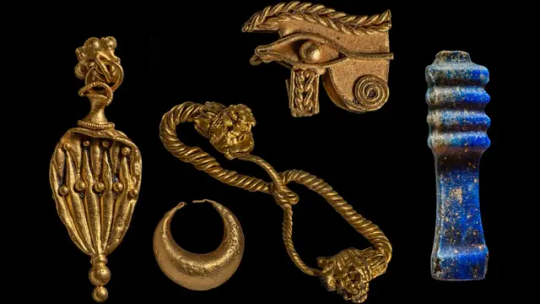
Sunken Temples of Aphrodite and Amun Found off Egyptian Coast
New discoveries off Egyptian coast reveal ‘treasures and secrets
New “treasures and secrets” have been revealed at the site of a sunken temple off Egypt’s Mediterranean coast, the European Institute for Underwater Archaeology (IEASM) announced in a news release Tuesday.
An underwater archaeological team, led by French marine archaeologist Franck Goddio, has made further discoveries at the site of a temple to god Amun in the ancient port city of Thonis-Heracleion in the Bay of Aboukir, the institute said.
The team investigated the city’s south canal, where huge blocks of stone from the ancient temple collapsed “during a cataclysmic event dated to the mid-second century BC,” the institute said.
The temple to god Amun was where pharaohs came “to receive the titles of their power as universal kings from the supreme god of the ancient Egyptian pantheon,” it said.

“Precious objects belonging to the temple treasury have been unearthed, such as silver ritual instruments, gold jewelry and fragile alabaster containers for perfumes or unguents,” IEASM said. “They bear witness to the wealth of this sanctuary and the piety of the former inhabitants of the port city.”
The archaeological excavations, conducted jointly by Goddio’s team and the Department of Underwater Archaeology of the Ministry of Tourism and Antiquities of Egypt, revealed underground structures “supported by very well-preserved wooden posts and beams dating from the 5th century BC,” the institute said.
“It is extremely moving to discover such delicate objects, which survived intact despite the violence and magnitude of the cataclysm,” said Goddio, who is president of IEASM and director of excavations.
The discoveries were made possible thanks to the development and use of new geophysical prospecting technologies that can detect cavities and objects “buried under layers of clay several meters thick,” the institute said.



Relics from Greek presence, too
East of the Amun temple, a Greek sanctuary devoted to Aphrodite was discovered containing bronze and ceramic objects.
“This illustrates that Greeks who were allowed to trade and settle in the city during the time of the Pharaohs of the Saïte dynasty (664 - 525 BC) had their sanctuaries to their own gods,” the institute said.
The discoveries of Greek weapons also reveal the presence of Greek mercenaries in the area, IEASM said. “They were defending the access to the Kingdom at the mouth of the Canopic Branch of the Nile. This branch was the largest and the best navigable one in antiquity.”
The remains of Thonis-Heracleion are now located under the sea, 7 kilometers (4.3 miles) from the present coast of Egypt, IEASM said. The city was for centuries Egypt’s largest port on the Mediterranean before the founding of Alexandria by Alexander the Great in 331 BC.
“Rising sea levels and earthquakes followed by tidal waves triggering land liquefaction events, caused a 110 square kilometer portion of the Nile delta to totally disappear under the sea, taking with it the city of Thonis-Heracleion,” the institute said.
The city was discovered by the IEASM in 2000.
By Radina Gigova.
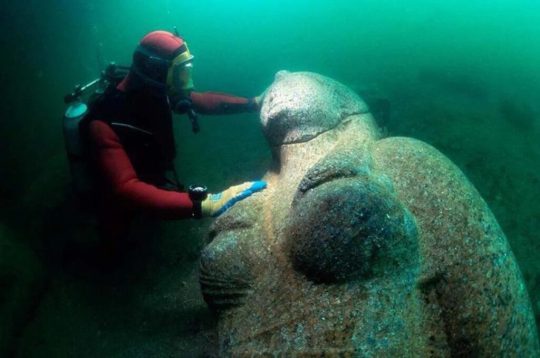


#Sunken Temples of Aphrodite and Amun Found off Egyptian Coast#Thonis-Heracleion#Bay of Aboukir#gold#gold treasure#ancient artifacts#archeology#archeolgst#history#history news#ancient history#ancient culture#ancient civilizations#ancient egypt#egyptian history#egyptian mythology#greek history
296 notes
·
View notes
Text
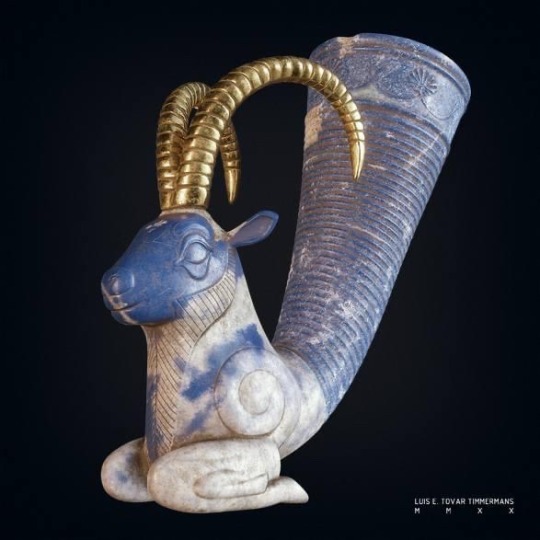
In the heart of the ancient Achaemenid Empire, a masterpiece of Persian artistry emerges—a rhyton (drinking horn or in the shape of a horn) carved from the deep blue lapis lazuli and adorned with gold, taking the form of a majestic ibex (mountain goat).
Dating back to the 6th to 5th century BCE, this exquisite ceremonial vessel not only exemplifies the sophisticated craftsmanship and rich symbolism of the time but also provides a fascinating glimpse into the cultural and economic prowess of ancient Persia.
[Description and Material]:
*Material:
Lapis lazuli, a semi-precious stone prized for its deep blue color, was highly valued in ancient Persia and sourced primarily from what is now Afghanistan.
*Form:
The rhyton is shaped like an ibex, a type of wild goat with prominent, curved horns, reflecting the importance of nature and animal motifs in Persian art.
[Use]:
*Function:
A rhyton is a type of vessel typically used for drinking or pouring liquids, especially in ceremonial contexts. The liquid would be poured from the top and flow out through the spout, which could be the mouth of the animal in this case.
*Ceremonial Role:
Rhytons were often used in religious and royal ceremonies. The choice of lapis lazuli and the intricate craftsmanship suggest that this particular rhyton was likely used by the elite, possibly in rituals associated with the Zoroastrian religion or royal banquets.
[Cultural and Historical Significance]:
*Art and Symbolism: The ibex design reflects the importance of wildlife in Persian culture and the symbolic use of animals in conveying power and divinity. The ibex, with its strong and agile form, could symbolize qualities such as strength and resilience.
*Trade and Wealth: The use of lapis lazuli indicates extensive trade networks and the wealth of the Achaemenid Empire, as this material was not locally sourced and had to be imported.
*Royal Patronage: The Achaemenid rulers were great patrons of the arts, and such luxurious items underscore their desire to display their wealth, power, and cultural sophistication.
[Academic Perspective on Material Culture]:
*Cultural Synthesis:
Scholars often view Achaemenid art, including rhytons, as a synthesis of various cultural influences, including Mesopotamian, Egyptian, and Greek, reflecting the diverse and cosmopolitan nature of the empire.
*Representation of Power:
Academics see these artifacts as representations of royal propaganda, showcasing the divine right and grandeur of the Persian kings.
*Symbol of Status:
In material culture studies, such high-quality items are considered symbols of social status and wealth. They provide insights into the social hierarchy and economic conditions of the time.
*Artistic Techniques:
The craftsmanship of the rhyton is analyzed for its artistic techniques, such as carving and polishing lapis lazuli, which indicate advanced skills and aesthetic values.
[Notable Examples]:
Museums and Collections: Notable examples of such rhytons can be found in major museum collections, such as the British Museum and the Louvre, where they are studied and displayed as prime examples of Achaemenid artistry and craftsmanship.
In conclusion, the lapis lazuli rhyton in the shape of an ibex from the Achaemenid period is a significant artifact that illustrates the artistic, cultural, and economic aspects of ancient Persia. It serves as a key piece of material culture, providing valuable insights into the ceremonial practices, trade networks, and socio-political dynamics of the Achaemenid Empire.
#ancient Persia#Zoroastrianism#ceremonial vessel#rhyton#lapis lazuli#Iran#Mesopotamia#Ancient history#Near East#ancient civilisations#ancient art#ancient craft#archaeology#Achaemenid#Achaemenid Culture
50 notes
·
View notes
Text
Dionysus: The Multifaceted God of Wine, Ecstasy, and Transformation
Dionysus, also known as Bacchus in Roman tradition, is one of the most complex and multifaceted deities of ancient Greek mythology. As the god of wine, revelry, and ecstasy, Dionysus occupies a unique place in the pantheon, embodying themes of transformation, liberation, and the duality of human experience. This essay explores the various aspects of Dionysus, his mythology, and his cultural significance.

Origins and Birth
Dionysus’s origins are both divine and somewhat mysterious. According to myth, he is the son of Zeus, the king of the gods, and Semele, a mortal woman. The story of his birth is one of transformation and intrigue. Hera, the jealous wife of Zeus, tricked Semele into demanding that Zeus reveal himself in his full divine splendor. The sight was too much for Semele, who perished in the blaze. Zeus saved the unborn Dionysus by sewing him into his thigh, from which the god was later born, making Dionysus a god with a unique connection to both the mortal and divine realms.
God of Wine and Festivity
Dionysus is most famously known as the god of wine, viticulture, and festivity. He represents not only the pleasure and intoxication associated with wine but also its transformative power. Wine, in the Dionysian context, is not merely a beverage but a conduit for experiencing the divine and transcending ordinary reality. It symbolizes both ecstasy and chaos, revealing the dual nature of Dionysus's influence.
Festivals dedicated to Dionysus, such as the Dionysia and the Bacchanalia, were central to Greek culture. These festivals involved theatrical performances, particularly tragedies and comedies, which were believed to be inspired by the god. The Dionysian festivals were not only a celebration of the harvest but also an opportunity to explore the boundaries of human experience and to engage in communal revelry.
The Cult and Mysteries of Dionysus
The worship of Dionysus was marked by ecstatic rituals and mystery cults. The Dionysian Mysteries, which were held in various forms across Greece, were initiatory rites that promised personal transformation and enlightenment. These mysteries often involved rites of purification, symbolic death and rebirth, and ecstatic dance, reflecting the god’s role in breaking down social norms and exploring the depths of human consciousness.
Participants in these rituals often wore masks and costumes, embodying the god’s ability to transcend ordinary identities and societal constraints. Dionysian worship emphasized the ecstatic experience of divine presence, achieved through music, dance, and the consumption of wine. This state of ecstasy was seen as a way of connecting with the divine and accessing hidden truths.
Symbolism and Attributes
Dionysus’s symbols include the grapevine, ivy, and the thyrsus, a staff entwined with ivy and topped with a pine cone. The grapevine and ivy represent his association with fertility and growth, while the thyrsus is a symbol of his power and authority. In artistic depictions, Dionysus is often shown in a state of revelry, accompanied by a retinue of satyrs and maenads, who embody the wild and untamed aspects of his nature.
Dionysus’s dual nature is central to his symbolism. On one hand, he represents joy, liberation, and creativity, often associated with the freeing effects of wine and the exhilaration of artistic expression. On the other hand, he also embodies chaos, madness, and the breakdown of order, reflecting the destructive potential of his divine influence.
Mythological Narratives
Dionysus’s myths often explore themes of transformation, conflict, and the struggle for acceptance. One notable myth is the story of his journey to establish his cult in the city of Thebes. King Pentheus, who refuses to acknowledge Dionysus’s divinity, is ultimately torn apart by his own mother, Agave, who has been driven into a frenzied state by the god. This myth illustrates the consequences of resisting or denying the transformative power of Dionysus and highlights the god’s capacity for both creation and destruction.
Another important myth is the story of Dionysus and the pirate ship. According to legend, Dionysus was once captured by a group of pirates who did not recognize him. As punishment, he transformed the ship into a sea of wine and turned the pirates into dolphins, demonstrating his power and the divine retribution against those who do not honor him.
Cultural and Philosophical Impact
Dionysus's influence extends beyond mythology and religion into art, philosophy, and literature. The concept of the Dionysian, as articulated by the philosopher Friedrich Nietzsche in his work "The Birth of Tragedy," represents a fundamental aspect of human existence, characterized by a celebration of chaos, creativity, and the primal forces of nature. Nietzsche contrasts the Dionysian with the Apollonian, which embodies reason, order, and rationality, suggesting that a balance between these forces is essential for a full and meaningful life.
In literature and art, Dionysus has been a symbol of the power of transformation and the limits of human understanding. His presence in tragic dramas, such as those of Euripides, often serves to challenge societal norms and explore the nature of divine influence on human affairs.
Conclusion
Dionysus is a deity who embodies the complexities of human experience, from the ecstatic highs of celebration to the dark depths of chaos. As the god of wine, revelry, and transformation, he represents both the joy and the danger inherent in breaking free from societal constraints and exploring the full range of human emotions and experiences. Through his myths, rituals, and cultural impact, Dionysus continues to be a powerful symbol of the divine’s capacity to both create and destroy, to liberate and to confound. His legacy endures as a reminder of the profound and often paradoxical nature of existence itself.

#mysticism#mystic#occultism#deity worship#hellenic deities#hellenic pagan#hellenic polytheism#hellenic worship#hellenism#cult of dionysus#dionysus deity#chatgpt#Dionysus
53 notes
·
View notes